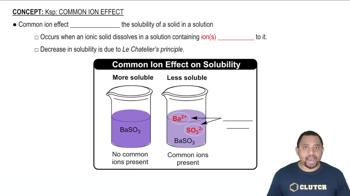Here are the essential concepts you must grasp in order to answer the question correctly.
Ionic Compounds
Ionic compounds are formed when positively charged ions (cations) and negatively charged ions (anions) bond together through electrostatic forces. The overall charge of the compound must be neutral, meaning the total positive charge from cations must balance the total negative charge from anions. Understanding how to combine these ions based on their charges is essential for determining the correct formulas of the resulting compounds.
Recommended video:
Charge Balance
Charge balance is a fundamental principle in forming ionic compounds, where the sum of the positive charges must equal the sum of the negative charges. For example, if a cation has a charge of +1 and an anion has a charge of -1, they combine in a 1:1 ratio. In cases where the charges differ, such as +2 and -2, the ions will also combine in a 1:1 ratio, while a +1 cation with a -2 anion would require two cations to achieve charge neutrality.
Recommended video:
Common Ions and Their Charges
Familiarity with common ions and their respective charges is crucial for predicting the formulas of ionic compounds. For instance, sodium (Na+) has a +1 charge, nitrate (NO3-) has a -1 charge, potassium (K+) has a +1 charge, sulfate (SO42-) has a -2 charge, strontium (Sr2+) has a +2 charge, and chloride (Cl-) has a -1 charge. Recognizing these ions and their charges allows for the correct assembly of ionic formulas based on charge balance.
Recommended video:
 Verified step by step guidance
Verified step by step guidance

